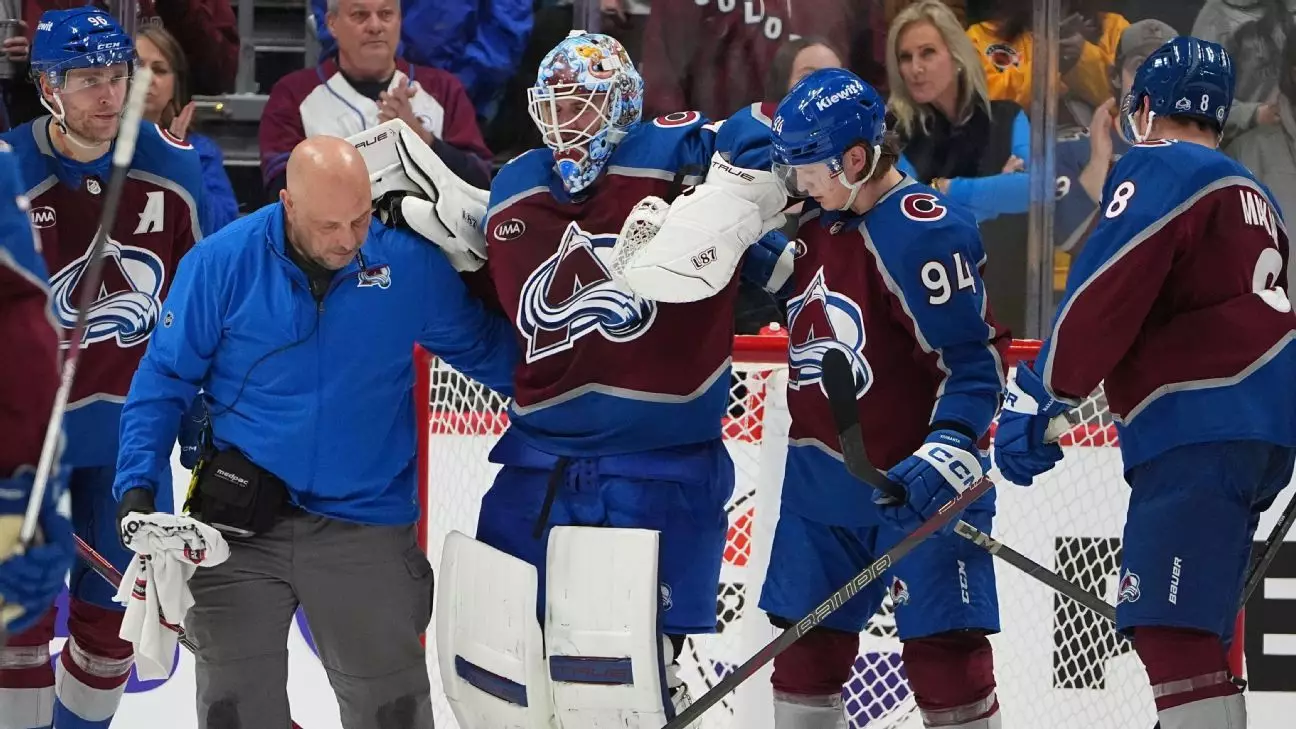On a night filled with highs and lows, the Colorado Avalanche faced off against the Buffalo Sabres in a game that would ultimately test their resilience and provoke fiery emotions from their head coach, Jared Bednar. Despite claiming an exhilarating 6-5 overtime victory, Bednar’s ire was palpable, underscoring how pivotal moments in sports can turn the triumph of victory into a bitter aftertaste when player safety issues are at play. His frustration stemmed from a controversial non-call by referees during the third period when goaltender Scott Wedgewood found himself in a precarious position after an incident involving Sabres forward Zach Benson.
The Avalanche’s tumultuous comeback from a three-goal deficit was compelling, yet it was a single moment in the third period that overshadowed the triumph on the ice. Bednar’s candid criticism of officiating brought to light the critical issue of player safety, eliciting a discussion that extended beyond the game itself. How officials navigate these high-pressure scenarios can have far-reaching implications—not only for the outcome of games but also for the well-being of players involved.
The pivotal moment occurred when a collision took place involving Wedgewood, who was left down in the crease after being struck by Benson following a push from Avalanche center Parker Kelly. With Wedgewood unable to get up, the play continued, shocking observers as the Sabres took advantage of their opportunity. Benson, unscathed, regained possession and scored, much to the fury of the Avalanche players and coaching staff. Bednar’s incredulity that the whistle remained silent speaks volumes about the expectations surrounding player protection—especially for goaltenders, who are often at the mercy of erratic plays.
“It’s just that simple,” Bednar expressed, emphasizing that in the event of an injury, it falls to the officials to prioritize the health of the players above the relentless pace of the game. Such incidents force us to examine the overarching question: What defines a player safety standard, and why do officials sometimes fail to uphold it when it matters most?
Despite the disheartening nature of the call, the Avalanche rallied brilliantly, showcasing their depth and resilience. Jonathan Drouin and Devon Toews delivered critical moments in the game that not only tied the score but ultimately secured the win for Colorado. It is fascinating to observe how perceived injustices on the ice can ignite a sense of unity among players, pushing them to transcend individual frustrations and focus on collective triumph.
Bednar’s decision to challenge the goal for goaltender interference—though he acknowledged the slim chance of reversal—underscored his commitment to the principle of advocacy for his players. It signified a leadership approach that prioritizes accountability over simple victory. His intention to communicate with the NHL highlights the importance of ongoing dialogue between leagues and coaches regarding enforcement and interpretation of rules that directly impact player safety.
As Bednar prepared for a likely conversation with league officials, the media and fans alike continued to reflect on the implications of such officiating decisions. The incident raises a broader issue: how can leagues ensure that player safety is consistently prioritized? In a sport where the intensity is significant and physicality is the norm, the pressure on officials to maintain control also necessitates a fierce commitment to the welfare of athletes.
Hence, while the Avalanche walked away with the win, delivering them a confidence boost, the bitterness from this incident may linger on for Bednar and Wedgewood, as both look to rectify concerns raised by their experience on the ice. In sports, it’s often said that to win a game, one must play to the final whistle. However, it is equally vital that players remain protected until that final moment is reached.
The fine line between aggressive gameplay and necessary stoppages will continue to be part of the sports dialogue. As coaches like Bednar advocate for their players, it is vital that rules evolve to safeguard all involved. After all, without player safety being the priority, the soul of the game itself is compromised, leaving fans and players alike with a questionable legacy.

